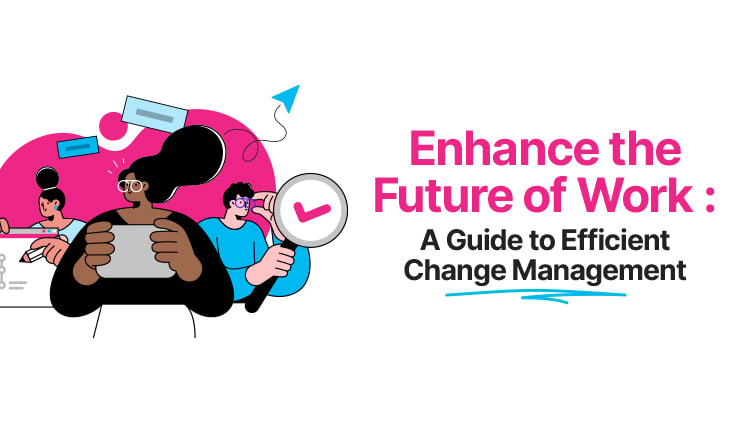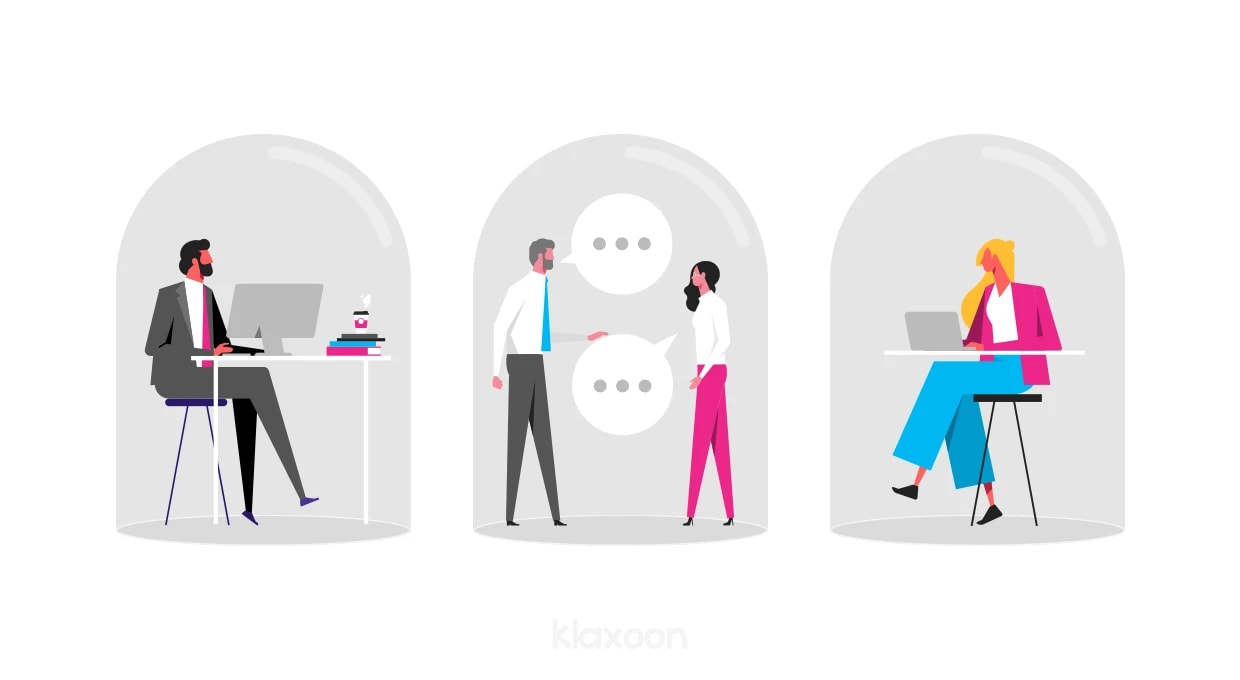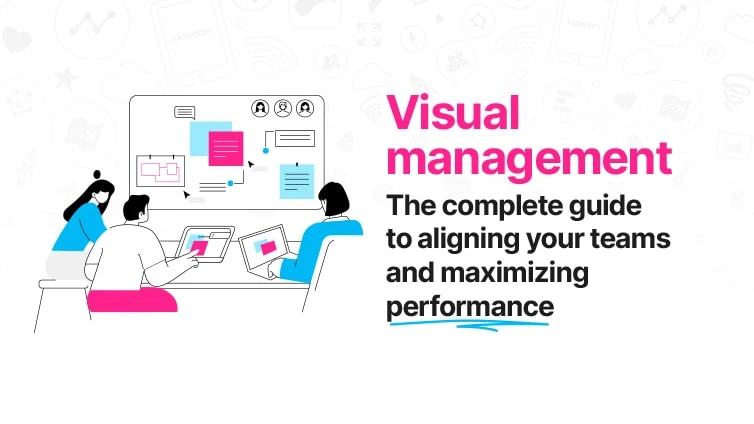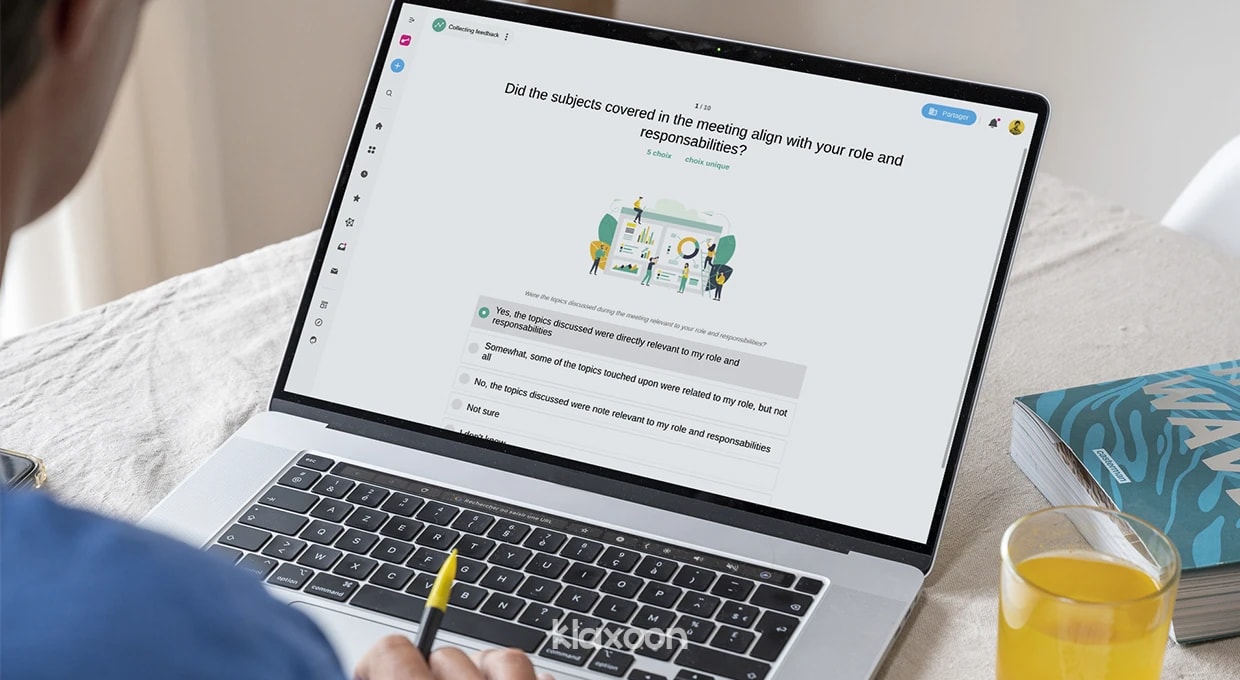Next-gen collaborative tools: How to innovate for sustainable results
Published on July 30, 2025
Next-gen collaborative tools: How to innovate for sustainable results
For several years now, companies have been operating in an uncertain economic climate. Sadly, it has become the norm, and this can jeopardize growth potential. To continue to grow, they need to be able to innovate quickly and resiliently. However, managing innovation presents significant challenges: high costs, risk of failure, and the impact it can have on your teams and performance.
To overcome these challenges, it is essential to create an innovation-friendly workspace using the power of next-generation collaborative tools. These technologies provide a secure and flexible framework, encouraging autonomy, engagement and hybrid collaboration. They enable teams of all sizes to work together more seamlessly and efficiently, anytime and from anywhere.
In this guide, you will see how to identify the collaborative tools best suited to your context and innovation needs. You will also discover how to use them effectively to empower your teams and easily transform their practices. With examples of tools like the Klaxoon platform, you will understand how engaging collaboration helps foster an innovation culture.

In an article published in 2022, the Harvard Business Review presented the lessons learned by companies which had to innovate in the uncertain environment of recent years.
They observed that the current economic instability poses a real risk to growth. In response, organizations must be able to innovate by transforming their practices at scale, and by investing in emerging technologies.
Among these technologies, collaborative tools are currently being democratized in companies of all sizes, enabling them to accelerate their innovation. And why? Because these new-generation tools are sustainable, secure, and meet the expectations of all generations on the job market: autonomy, engagement, flexibility within a hybrid framework, etc.


Collaborative tools are powerful levers for improving efficiency in the context of innovation.
However, innovation management is not a linear process. It can involve high costs that you need to keep under control, whether you are transforming your products or services, or covering all the needs of your in-house staff. To maximize your chances to succeed, you must first and foremost create a workspace that enables effective innovation management, in line with your business objectives.
This guide is here to help you do just that. Let's take a look at how you can harness the full power of next-generation collaborative tools to create an environment conducive to innovation in your company.
Every 3 years, an average employee experiences 5 major organizational changes (Gartner).
These can be:
Innovation is therefore part of the daily life of teams, and creates an additional level of complexity which you need to take into account. To innovate in the best conditions, you need to be aware of the many factors that can increase the costs of innovation, both financially and in terms of your teams' well-being.
Innovation represents a significant budget for an organization. However, if you don't target specific transformation projects, and invest in innovation in the broadest sense, these budgets can quickly increase due to a lack of follow-up.
So, take care to avoid over-investing by always keeping control of your innovation budgets, and allocating them to projects with clearly defined objectives.
By its very nature, innovation requires adapting and reacting to changes in the market. If companies don't adopt a resilient posture quickly, they run the risk of being overtaken by the competition, and generating numerous costs in an attempt to stay afloat.
Remember Nokia? The Finnish phone brand had everything going for it in the early 2000s, with almost half of its market share. However, in 2007, with the launch of the first iPhone, Nokia struggled to make the transition to smartphones and touchscreen technologies.
In the years that followed, although the brand eventually released a few smartphone models, these were perceived as far less innovative, even lagging behind the competition. Its lack of reactivity and timely innovation ultimately cost Nokia its place as market leader.
The larger a company, the more likely it is to have teams working in silos, i.e. interacting essentially with their own department. This also encourages two-speed innovation.


In a siloed communication model, cross-functional exchanges are limited, and this slows down innovation in teams.
For example, some organizations have departments or "Innovation Labs" dedicated to thinking about these issues. However, the ideas that emerge may take time to reach other teams, who may also find it difficult to adopt them because they are reluctant to change or work in silos.
So, the level of exposure to innovation is different, depending on whether you work daily with the people most involved in these issues. For the company, this can lead to a lack of homogeneity in their operations, and therefore to a constant need for adjustment efforts to keep all teams at the same level of information.
The phenomenon is the result of too many innovation initiatives that lack clarity of purpose and execution. This happens when companies innovate for the sake of innovating, without this innovation carrying a meaning that resonates with everyone in their teams.
Faced with the constraint of having to adapt constantly with no clear goal in mind, teams can become weary of change. According to Gartner, this change fatigue impacts the organization on several levels: talent retention, trust, and above all team performance and accountability, in over 50% of cases.
Finally, innovation is not always synonymous with success. In fact, more than half of all business transformation initiatives generate mixed results, and only 40% fully achieve their objectives (Gartner).
So the risk of failure does exist. However, if the fear of failure becomes a barrier to initiatives, then there will be no innovation at all.
To give your organization the confidence to innovate with a clear understanding of what is involved, it is important to create the right working environment for projecting, anticipating, clarifying objectives and reducing the number of unknowns.

First and foremost, it is important to create a working environment based on trust, which enables transparent communication and facilitates everyone's expression.
According to HBR, the trust that exists between members of an organization is closely linked to the quality of their performance. For example, here is how you can reinforce this sense of trust and belonging to a collective:
Creating a transparent workspace also means creating a framework that enables experimentation, and lifting the taboo of making mistakes, to see them as opportunities to learn and progress.
This can take many forms, like the "failcons" organized by Sarah Drinkwater when she was head of Google’s London Campus. By getting Google's most innovative minds to talk about their failures, this concept has helped demystify them, and has enabled their colleagues to learn from them in turn.
When it comes to innovation, trying is part of the path to success. Even a giant like Dyson needed around 5,127 tests before finalizing the creation of its bagless vacuum cleaner prototype. Your working environment should also reflect this resilience, and the willingness to communicate freely around less successful results.
Finally, a third fundamental component of an innovative workspace is the regular sharing of feedback. Whether in project management, training or internal interactions, soliciting and giving constructive feedback must become systematic in your organization.
Why should it? Because the feedback you receive shows you different perspectives, and prompts you to broaden your approach to a subject. As a result, you can adjust and improve faster and more effectively.


An effective way to ask your teams for feedback is to share a quick survey with them.
Not to mention that it is also an excellent way of empowering all your teams, and getting them to communicate better both synchronously and asynchronously. For example, you can devote some time during a project meeting to share feedback, or share a survey to gather feedback before or after the meeting, to simplify preparation for the next steps.
Collaborative technologies are among the best solutions to help you create a structured workspace that fosters innovation and effective idea-sharing. These new-generation tools meet all the conditions listed above, and enable you to transform your practices while ensuring adoption by your teams.
It is no longer just about video conferencing or chat software. Today's best collaborative tools present all-in-one virtual spaces that combine several formats adapted to different collaboration needs:
In this way, they meet all the expectations of the different generations of users in today's workplace, enabling them to interact seamlessly and easily.
But how do you identify the collaborative tools best suited to your innovation needs? To spot them, you can use these four characteristics as a guide:
With the rise of hybrid and asynchronous working, corporate teams are increasingly distributed across multiple sites, sometimes even continents.
Consequently, the collaborative tools that will help them innovate are those that enable them to maintain a seamless and efficient working experience, wherever they may be.
This is the case, for example, with Klaxoon’s collaborative platform, which centralizes all your exchanges and files in a single virtual space: Board, its collaborative whiteboard. It also features an integrated video conferencing tool, and remains accessible from any connected device.


On-site or remotely, Board ensures the continuity of your work and team exchanges.
To innovate in the current context, it is necessary to engage all teams, and thus create a genuine cross-functional dynamic. Whether they are comfortable with technology or not, their workspace needs to be intuitive and easy to use, sometimes even with fun features added in.
In this sense, next-gen collaborative tools make it possible to take into account all ways of engaging and expressing oneself, beyond the spoken word. Thanks to the power of visual management, everyone can contribute in writing or orally, synchronously or asynchronously.
However, there are as many ways to engage as there are usages:
That is why, to cover them all, a whiteboard like Board is not sufficient on its own. It must be combined with other Klaxoon activities, each of which meets a specific collaboration need:


For example, a Quiz can help you test your team's knowledge of a topic presented on a Board.
An innovative collaborative tool must also simplify internal and external collaboration with your partners, while accelerating your decision-making, processes, projects, deliverables and time-to-market. All this while ensuring rigorous monitoring of engagement and participation metrics.
Some of these tools have developed ready-to-use methodology templates, designed to save users time by providing them with an activity structure tailored to their needs. Thanks to these templates, you can save hours or even months in project management, training or team meetings.
According to McKinsey, companies with an organizational culture focused on innovation are twice as likely as others to succeed in their digital transformation.
In addition to creating a workspace conducive to innovation, next-gen collaborative tools like Klaxoon can also help you value innovation in your corporate culture:
Unlock your teamwork potential